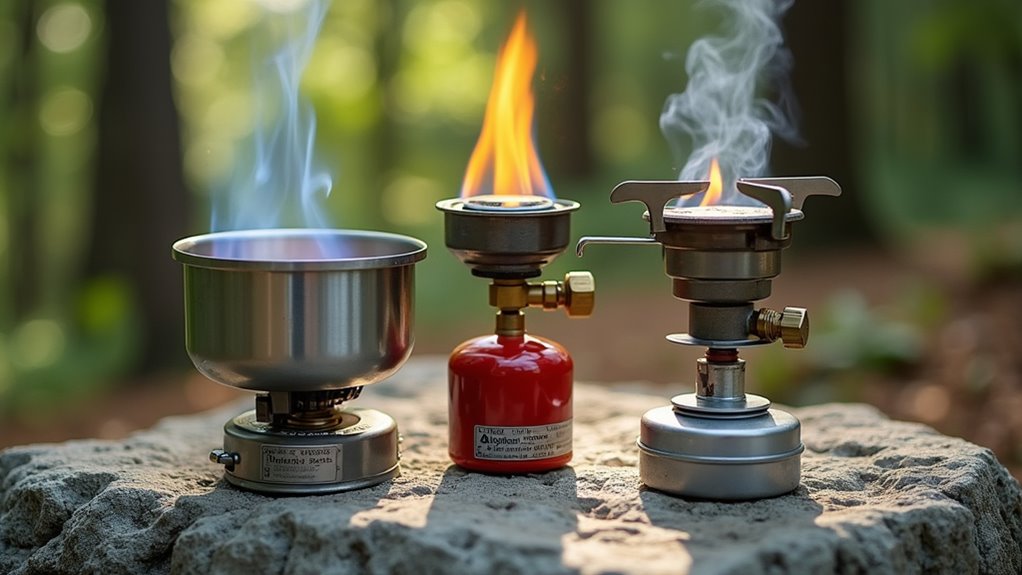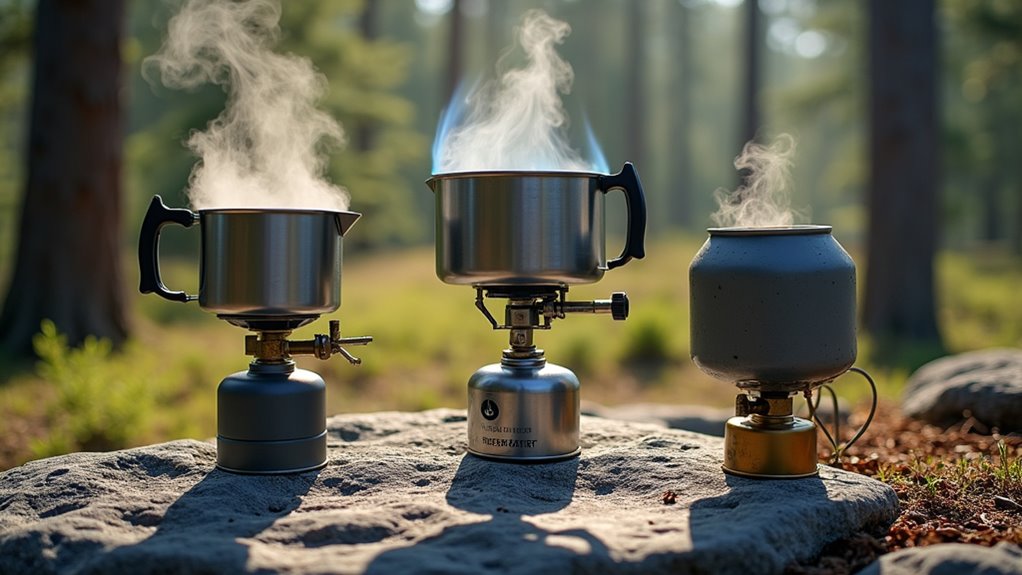Physical Address
304 North Cardinal St.
Dorchester Center, MA 02124
Physical Address
304 North Cardinal St.
Dorchester Center, MA 02124

Skip the expensive marketing hype—three overlooked factors determine your perfect camping stove, and most buyers get them completely wrong.
You’re standing in the camping gear aisle, overwhelmed by dozens of stove options ranging from $20 to $200+. Here’s the truth: the most expensive isn’t always the best choice for your adventures. Your perfect camping stove depends on three critical factors that most people completely overlook—and getting these wrong means you’ll either waste money or end up frustrated on the trail. Let’s cut through the marketing hype and focus on what actually matters.

When you’re planning your next camping adventure, selecting the right stove can make or break your outdoor cooking experience. The wrong choice leaves you struggling with finicky equipment while your food burns or stays cold, but the right stove becomes your reliable cooking companion for years to come.
Your fuel type decision shapes everything else about your stove choice. Canister stoves offer the easiest operation – just twist and light. They’re perfect if you’re new to camping or want hassle-free cooking. However, canisters cost more per use and perform poorly in cold weather.
Liquid fuel stoves burn hotter and work in freezing temperatures, making them ideal for winter camping or high-altitude adventures. They’re more fuel-efficient long-term, though they require more maintenance and skill to operate.
Consider how many people you’re feeding regularly. Single-burner stoves work fine for solo trips or couples who don’t mind cooking one dish at a time. If you’re feeding a family or group, invest in a two-burner model. You’ll cook faster and create more varied meals, making everyone happier around camp.
Weight matters notably for backpackers. Ultralight titanium stoves weigh mere ounces but cost considerably more than aluminum alternatives. Car campers can choose heavier, more robust models with better wind resistance and stability. Think honestly about how you’ll transport your gear.
BTU ratings tell you how much heat output you’ll get, but higher isn’t always better. Stoves with 7,000-10,000 BTUs handle most camping cooking tasks efficiently. Ultra-high BTU burners consume more fuel and create hot spots that burn food. Look for adjustable flame control instead – you’ll use it constantly.
Wind resistance can’t be overlooked. Many budget stoves struggle in breezy conditions, turning simple cooking into frustrating ordeals. Look for models with built-in windscreens or plan to buy a separate windscreen. Your cooking times and fuel consumption improve dramatically with proper wind protection.
Piezo ignition systems eliminate the need for matches or lighters, but they can fail. Always carry backup ignition sources regardless of your stove’s features. Simple push-button ignition works more reliably than fancy electronic systems in outdoor conditions.
Budget-conscious campers should consider versatile models that accept multiple fuel types. These stoves cost more initially but save money long-term since you can use whatever fuel’s available or cheapest.
Read reviews from actual users rather than relying solely on manufacturer claims. Real-world performance often differs from laboratory specifications, and experienced campers share valuable insights about reliability, durability, and practical use that marketing materials won’t reveal.
Don’t forget that quick coffee preparation can be just as important as cooking meals, especially for those early morning starts when you need caffeine before breaking camp with a portable espresso maker designed for outdoor use.
You’ve got the roadmap to stove success! Don’t let analysis paralysis burn your budget—pick the stove that fits your camping style like a glove. Whether you’re a lightweight backpacker or a car camping chef, the right stove will fuel your adventures without breaking the bank. Remember, the best camping stove isn’t the fanciest one on the shelf; it’s the reliable workhorse that’ll serve up hot meals when hunger strikes in the great outdoors.